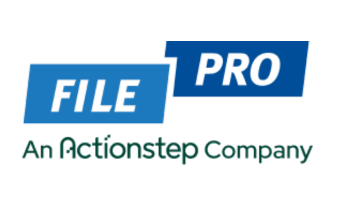In 2010, roughly 10 years ago to this very day, a new way of booking taxis was introduced to the world.
It probably sounded funny at the time – ‘Uber’.
But it hardly would have seemed revolutionary: you simply booked via an app, rather than calling or hailing off the street.

The end result was exactly the same. Uber took you from A to B at the same speed and in the same type of car as a taxi. It even started out as a more expensive alternative, so there was no price advantage.
Yet, 10 years later, Uber has reshaped the transport industry. It now has 110 million users worldwide, and is set to overtake taxis in Australia this year.
In short, my point is this: the exact same product, delivered with an improved customer experience (CX), can make all the difference. This is true of booking a ride, ordering takeaway, doing your banking, and working with a lawyer.
Improving Your Law Firm’s CX
Legal services are not laggards in understanding the importance of CX. Macquarie Bank’s Legal Pulse Check Survey 2020 reported that 76% of firms will focus on key client relationships over the next 12 months, up from 36% in 2017.
So, more likely than not, you’re already interested in improving your firm’s CX.
But how can you tell if your firm is a taxi or an uber, or (more likely) somewhere in between?
Start by auditing your current customer journey. Bernard Salt, one of Australia’s leading business commentators, recently suggested (The Australian, 2 November, 2019) that every business owner and senior management team perform simple checks on the ease of their business’s CX, eg: what happens when you call your firm, input website contact details, or request a file on the weekend?
Once you’ve identified areas for improvement, evaluate the different tools you can utilise. More often than not, many other law firms will have identified similar problems and various ‘suppliers’ will have developed tools to resolve these problems. In fact, many of these suppliers are lawyers who have critically assessed the CX in the legal process and recognised that technology is an enabler to help lawyers add real value to their firm.
Saying that, don’t fall into the trap of technology for technology’s sake.
Max Paterson recently commented that the fundamental strategic consideration should remain and you should ask yourself ‘What is tech good for, and what is the space where I need to aim my time and resources?’. As a lawyer, he foresees that “the next wave of legal tech will not be about cutting down on the mundane. It will be about performing [customer service] at a level hereunto impossible, or impossibly expensive.” This will impact hiring and training considerations and he suggests a “focus on two key areas; the human, and the top level analytical. The human is about your ability to relate and should be seen as defensible business skills.”
Based on her own experience in law, Fiona McLay sees the potential to reshape law firms to have a more human-centric approach – putting a great experience for customers and team members at the core of how law firms work. Even with increasingly tech enabled legal service delivery, human connection will remain central.
Above all, don’t lose sight of the fact that the customer is at the center of customer experience.
Practicing What We Preach
It’s definitely not just law firms who can benefit from improved customer experience.
Five years ago, FilePro developed a plan to ensure we not only maintained, but improved our customer experience during our challenging 5 year plan for growth and succession.
We started by partnering with a supplier to audit our customer experience. Together, we spoke to dozens of Australian law firms, identifying three key areas of improvement.
They were:
Communication
We were continually developing FilePro’s legal practice management software, creating integrations with expert partners (from banks to apps) and providing support and training to better use these systems. But, for all that, many people were unaware of these efforts.
Training
On top of the above, because not many people were aware of our training, our software’s more advanced features (one of our key competitive advantages) weren’t being fully utilised.
Facelift
Perhaps more simple than the previous two areas, but important nonetheless, our software needed a facelift to better reflect our modern capabilities and intuitiveness.
Making the Changes
None of these changes took place overnight, but I’m proud to say we achieved the following:
Communication
We started by telling people about our five-year strategy. It might sound obvious, but effective two-way communication engages advocates and provides valuable insights on your journey. It is an essential component of any organisation’s culture yet an ongoing challenge.
Then, to make customers aware of our expert partners, we developed a free, monthly newsletter with a range of valuable insights from these experts. We also use this channel to communicate updates to our business, software, training and more.
We are proud of our growing readership and recommend visiting our blog or becoming a subscriber to explore the expertise our guest authors can offer (if you aren’t already).
Training
While FilePro already offered training courses, we identified that there were a few obstacles: cost (however small) and accessibility.
To overcome this, we invested in a Training Unlimited initiative, providing unlimited (surprise) access to courses, 24/7 online learning and regular offsite workshops to our clients.
We saw an excellent response, with a 37-fold increase in the number of people attending our training. We expect that this will mean more firms are better utilising their investment in FilePro, improving our retention and client satisfaction.
Staying Ahead
Last but not least, FilePro is in a very strong position development-wise. We are coming to the end of our ‘rewrite/facelift’ and have a development team hungry to tackle new projects, including enhancing our mobility features and bringing on more innovative integrations. Over the next 2 months, we are excited to launch Versions 20.1 and 20.2. Stay connected to find out more.
Managing the Change and the Future
On top of all these CX changes, we also navigated the succession of our departing CEO, David Keeler, during this time. (As well as the full gambit of unexpected emotions that arose).
David recently reviewed the original ‘FilePro 2020’ plan and was excited that we stuck to it and were, in fact, ahead of schedule.
And finally, as I now take the reins as CEO of FilePro, I’d like to make a few key commitments to our staff and clients:
- Client choice – we will continue to support our clients with high quality, unlimited support and training, without locking people into contracts or holding their data to ransom;
- Investment – we will continue to enhance our software and integrate it with other market-leading systems, so that it remains user-friendly and intuitive
- Our people – FilePro will provide a comfortable and rewarding workplace for the FilePro team who work hard to preserve our trusted reputation
- Lean on your providers – I continue to encourage firms to lean on their providers to share their experience and technology – as an ongoing practice, not just at set up. Firms should not be left to figure out how to leverage their technology.
So, if you are not sure how your firm’s technology will deliver a better staff and client experience, contact me on 0438 170 781 or email for an obligation-free chat.




